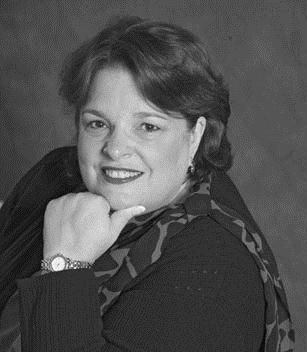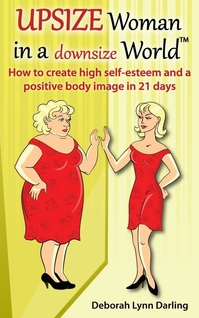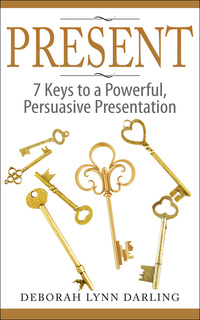You can craft the most brilliant presentation, have visual aids that hit it out of the park and deliver the presentation flawlessly but if you fumble on your Q&A you can damage your credibility quickly and maybe even permanently. The challenge is that no matter how knowledgeable you are, once you lose credibility it is very hard to get it back. The Q&A segment of your presentation is a great way for your audience to see how knowledgeable you are, how well you think on your feet and for you to answer any of their concerns. It also provides you the opportunity to reinforce your message and persuade the audience to take the desired outcome. Here are some pointers in dealing with Q&A and crafting a persuasive ending.
First and foremost I see so many presenters ending their presentations with the Q&A. Once your Q&A is done, you always want to give another formal close, whether your Q&A session was long or short. This ends your presentation in a powerful and persuasive way because you are reminding your audience the key points you spoke about, what you want them to do as a result of hearing your talk (the objective and make sure it is actionable) and why they should want to do what you are asking them to do (what’s in it for them—the emotional hit). This drives home your call to action and ends on a strong, powerful and persuasive note.
You want to make sure your answers are short, simple and concise. Don’t try to tell them everything you know in one answer. Just answer what they ask for. If they want more clarification they can ask another question. One of the biggest mistakes presenters make is to try to give too much information. This can become rambling if you are not careful and audiences will tune out very quickly once they feel someone is rambling on and on.
Always anticipate the questions that might come up as a result of the audience hearing your presentation. Rehearse your answers to these questions while you are rehearsing your presentation. Then assuming you have performed your due diligence and know as much about your audience as possible, anticipate any questions or concerns they may have in general and about your topic. Be ready to answer these questions as well. You can never prepare yourself too much for Q&A. It is that important.
When you are giving your presentation, try to hold all questions off until the formal Q&A segment. This allows you to move through your presentation and some of the questions the audience may have may have been answered in the presentation itself. Sometimes it is not possible to stop a question from being asked. If you know you are going to answer this in your presentation, let the audience know that you will be doing just that. Also let them know up front that you will be opening the floor for Q&A after your presentation and then do it. Most people will hold questions as long as they know they will have the opportunity to ask them at some point.
Make sure you listen to the question being asked of you and if you do not understand it, ask for clarification. Refrain from nodding when listening to the question. It could make the audience think you agree with something you don’t. When you are answering a question make eye contact with the person who asked the question first. Then as you are answering the question make eye contact with others in the room but make sure you come back to the person who asked the question before you end the answer. In this way you will engage the entire room and not just the person asking the question. When you are answering a person’s question step toward them and then to disengage from the person, step back. This is the cue that you are open for another question. Repeat this process with each person who asks a question.
Don’t say “good question,”etc. It is really just a vocal filler that is used to give you more time to think of the answer. The challenge is that once you say it to one person you almost have to say it to everyone or run the risk that someone will think they did not ask a good question. Don’t begin to answer the question before it is fully stated. It may be a two part question and you do not want to step on the questioners’ toes but starting the answer before they are finished with the question. If you don’t know the answer to the question do not be afraid to say so. One of the fastest ways to lose credibility is to try to fake an answer. Let the person know you will find out the answer and get back to them and then do so.
Sometimes you will find yourself in hostile territory. If you know your audience is going to have some resistance to what you have to say, incorporate that resistance into the presentation itself and address the issues there. This will help to diffuse some of the hostility. If you get someone who was not paying attention and asks the same question as someone else, do not make a big deal about it. Answer the question but in a slightly different way. In this way you will not draw attention to the fact that the person was not listening.
If you find someone dominating the Q&A segment do not be afraid to let them know you would like to give other people a chance to ask a question and thank them for the questions. Also let the audience know that you will stick around to answer any questions they may have. There may be people who would like to ask a question of a more sensitive area and do not wish to ask it in front of the group. This lets them know you will be available to them after the presentation. If someone asks a question that is totally irrelevant to your topic, let them know that you are only answering questions at this time that relate to the topic at hand. You will be happy to talk with them later. And lastly do not be afraid to correct anyone who makes an inaccurate assumption or tries to inaccurately paraphrase what you have said. This is a tactic that some hostile audience members use to make you slip up. Do not be afraid to correct them on the spot. Try to stay of yes/no questions by turning them into open-ended questions and when answering them keeping them short and concise.
Your Q&A can make or break you. Make sure you spend the time necessary on this area of your presentation so that your credibility not only stays in tact but is heightened. Knowledge alone does not a credible source make. Are there any questions?
Debbie Darling, ©2015 The Presentation Pros
Read more of The Presentation Pros blog HERE.
You want to make sure your answers are short, simple and concise. Don’t try to tell them everything you know in one answer. Just answer what they ask for. If they want more clarification they can ask another question. One of the biggest mistakes presenters make is to try to give too much information. This can become rambling if you are not careful and audiences will tune out very quickly once they feel someone is rambling on and on.
Always anticipate the questions that might come up as a result of the audience hearing your presentation. Rehearse your answers to these questions while you are rehearsing your presentation. Then assuming you have performed your due diligence and know as much about your audience as possible, anticipate any questions or concerns they may have in general and about your topic. Be ready to answer these questions as well. You can never prepare yourself too much for Q&A. It is that important.
When you are giving your presentation, try to hold all questions off until the formal Q&A segment. This allows you to move through your presentation and some of the questions the audience may have may have been answered in the presentation itself. Sometimes it is not possible to stop a question from being asked. If you know you are going to answer this in your presentation, let the audience know that you will be doing just that. Also let them know up front that you will be opening the floor for Q&A after your presentation and then do it. Most people will hold questions as long as they know they will have the opportunity to ask them at some point.
Make sure you listen to the question being asked of you and if you do not understand it, ask for clarification. Refrain from nodding when listening to the question. It could make the audience think you agree with something you don’t. When you are answering a question make eye contact with the person who asked the question first. Then as you are answering the question make eye contact with others in the room but make sure you come back to the person who asked the question before you end the answer. In this way you will engage the entire room and not just the person asking the question. When you are answering a person’s question step toward them and then to disengage from the person, step back. This is the cue that you are open for another question. Repeat this process with each person who asks a question.
Don’t say “good question,”etc. It is really just a vocal filler that is used to give you more time to think of the answer. The challenge is that once you say it to one person you almost have to say it to everyone or run the risk that someone will think they did not ask a good question. Don’t begin to answer the question before it is fully stated. It may be a two part question and you do not want to step on the questioners’ toes but starting the answer before they are finished with the question. If you don’t know the answer to the question do not be afraid to say so. One of the fastest ways to lose credibility is to try to fake an answer. Let the person know you will find out the answer and get back to them and then do so.
Sometimes you will find yourself in hostile territory. If you know your audience is going to have some resistance to what you have to say, incorporate that resistance into the presentation itself and address the issues there. This will help to diffuse some of the hostility. If you get someone who was not paying attention and asks the same question as someone else, do not make a big deal about it. Answer the question but in a slightly different way. In this way you will not draw attention to the fact that the person was not listening.
If you find someone dominating the Q&A segment do not be afraid to let them know you would like to give other people a chance to ask a question and thank them for the questions. Also let the audience know that you will stick around to answer any questions they may have. There may be people who would like to ask a question of a more sensitive area and do not wish to ask it in front of the group. This lets them know you will be available to them after the presentation. If someone asks a question that is totally irrelevant to your topic, let them know that you are only answering questions at this time that relate to the topic at hand. You will be happy to talk with them later. And lastly do not be afraid to correct anyone who makes an inaccurate assumption or tries to inaccurately paraphrase what you have said. This is a tactic that some hostile audience members use to make you slip up. Do not be afraid to correct them on the spot. Try to stay of yes/no questions by turning them into open-ended questions and when answering them keeping them short and concise.
Your Q&A can make or break you. Make sure you spend the time necessary on this area of your presentation so that your credibility not only stays in tact but is heightened. Knowledge alone does not a credible source make. Are there any questions?
Debbie Darling, ©2015 The Presentation Pros
Read more of The Presentation Pros blog HERE.





